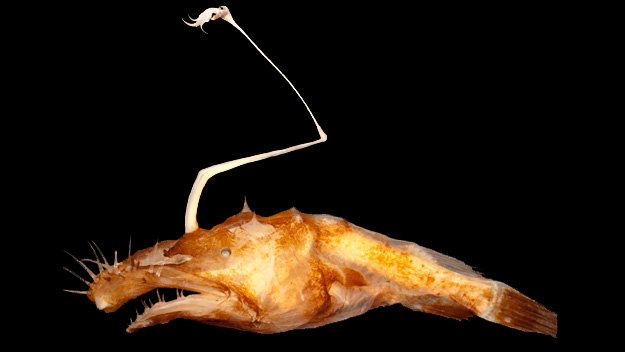Scientists Find New Deep Sea Anglerfish Species
Three of the females discovered ranged in size from one to 3 1/2-inches long.
For researchers, the most exciting thing about deep-sea discoveries like this is that they affirm that the majority of the ocean’s wonders have yet to be discovered.
Researchers have found a new species of deep-sea anglerfish of the genus Lasiognathus in the waters off the northern Gulf of Mexico.
Now and again, marine scientists plumbing the dark depths of the sea pull out a new fish species that is just out-and-out ugly. Bioluminescent creatures, like the ceratioid anglerfish, usually serve as the only source of light.
Like the preceding anglerfish coming out of the deep, this creepy looking animal uses the same type of bioluminescence at the tip of its angler, used to attract its prey in an environment where no sunlight exists and where the pressure stands at more than 2,200 pounds per square inch. And the fight for food is never-ending.
“This fish dangles the appendage until an unsuspecting fish swims up thinking they found a meal, only to quickly learn that they are, in fact, a meal themselves”, according to the news release posted on the Nova Southeastern University website.
Such finds remind Tracey Sutton, a deep-sea life expert at the university, of how much of the world’s vast oceans are yet undiscovered. “Every research trip is an adventure and another opportunity to learn about our planet and the varied creatures who call it home”.
Dr. Sutton studies the ecology of marine systems, particularly those of the open ocean.
They were collected as part of an ongoing Natural Resource Damage Assessment Process conducted by the National Oceanic and Atmospheric Administration pursuant to the Deepwater Horizon Oil Spill. He combines observational, organismal and theoretical approaches to help understand Earth’s largest, but least known ecosystems.
Dr Sutton and his colleague, Dr Theodore Pietsch from the University of Washington, proposed the scientific name Lasiognathus dinema for the new species.








